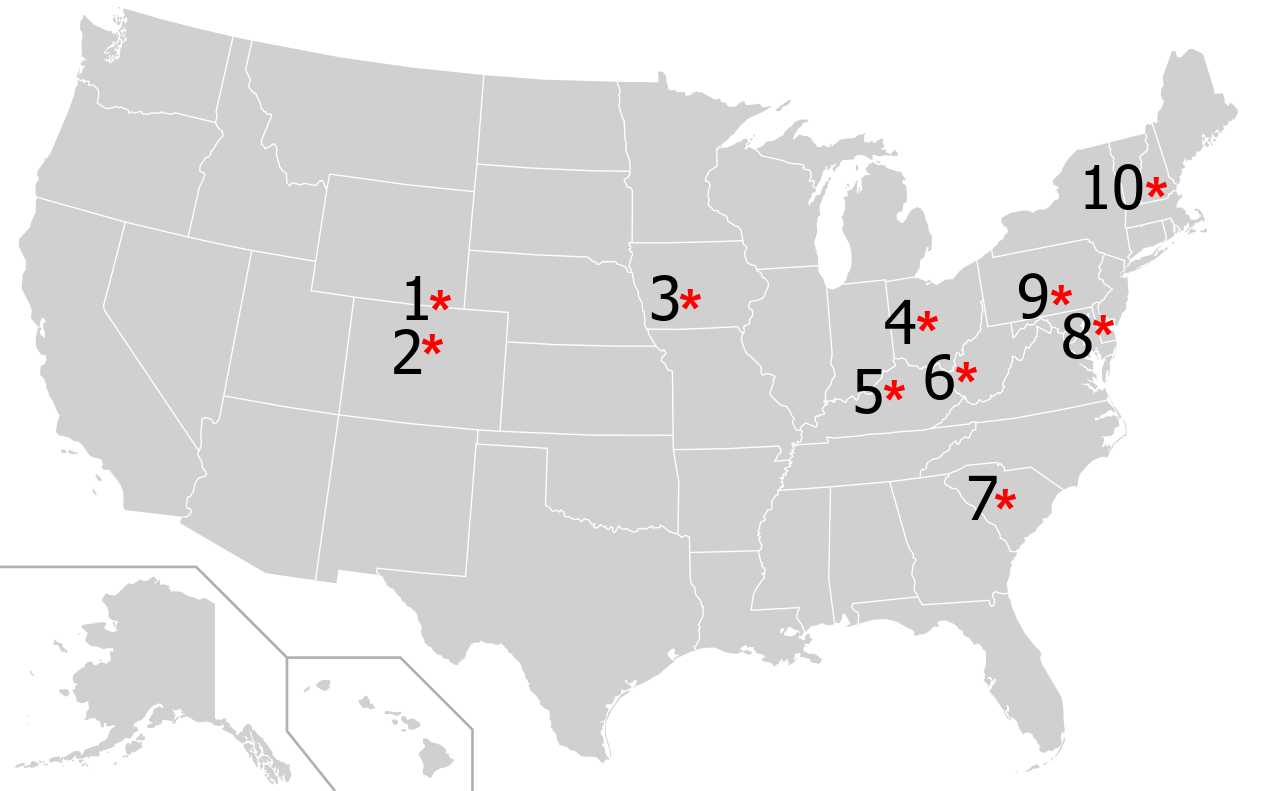
Alphabetical America, Part Two Quiz
The second instalment of my series of labeling US State Capitals, featuring the next group of ten cities ordered alphabetically (by city name, not state). Match the correct capital city name (Charleston to Harrisburg) to its geographical location.
A label quiz
by reedy.
Estimated time: 3 mins.
